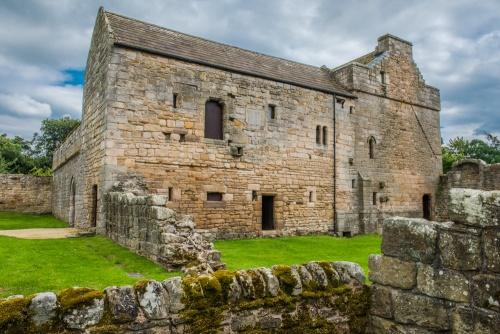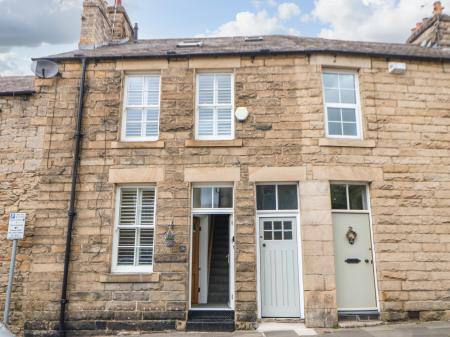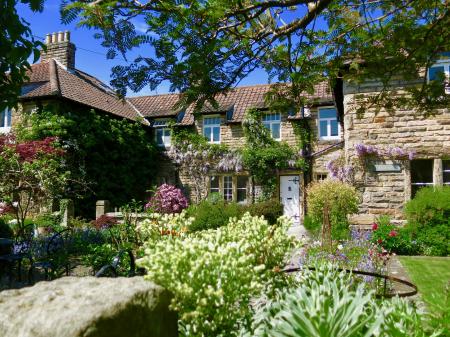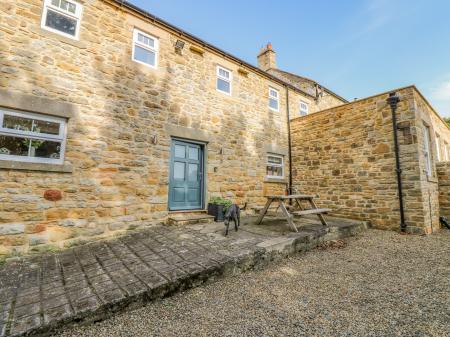
The manor of Aydon was purchased by Hugh de Reymes around 1294, and it was Henry's son Robert de Reymes who replaced the earlier wooden hall with the stone manor we see today. Aydon was adapted to use as a farmhouse in the 18th century, and it remained thus until 1966 when it passed to the management of English Heritage.
The castle site is composed of an outer courtyard, middle courtyard, inner courtyard where the major buildings are located, and an orchard. A footpath encircles the castle walls. Worthy of note is a wonderful medieval chimney on the south side of the site.

A curtain wall protects the site on two sides, with the remainder protected by a steep hill. Rectangular and D-shaped towers are built into the curtain wall. Agricultural buildings are evident in the outer courtyard, while a 17th-century barn occupies the middle courtyard, where quarters for retainers would have stood in the medieval period. The inner courtyard is protected by battlements with a wall walk behind stone parapets.
The main entrance to the central hall is by way of a set of stairs to the first floor. Within the hall are a range of rooms, from the main upper hall, lower hall, kitchen wing, great chamber, and lower chamber.

Visiting Aydon Castle
Aydon Castle is well signposted from surrounding roads, but if you are arriving by car, drive carefully, for the castle can only be reached by a set of narrow lanes with minimal passing places.
The term 'castle' is a bit misleading; Aydon is not a castle in the traditional sense, but a fortified manor house. What is really fascinating is how what was intended to be a comfortable rural residence for a wealthy merchant had to be adapted when war broke out along the Scottish border.
The alterations to the manor were intended to make the house defensible, but they did not suffice. It is a reminder of just how turbulent life must have been in this area throughout the medieval period. I loved visiting Aydon; it offers a glimpse of what life must have been like, not for the upper crust of society, but for a moderately well-off merchant with pretensions to gentryhood.










 We've 'tagged' this attraction information to help you find related historic attractions and learn more about major time periods mentioned.
We've 'tagged' this attraction information to help you find related historic attractions and learn more about major time periods mentioned.



